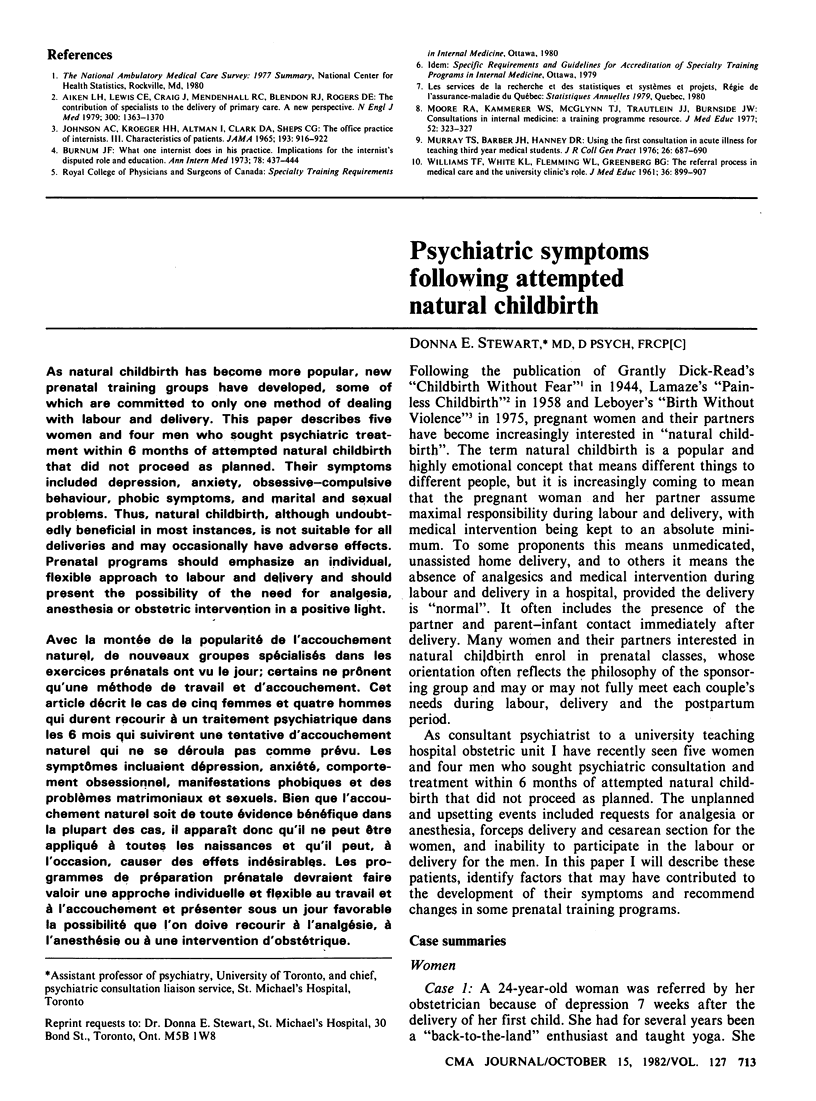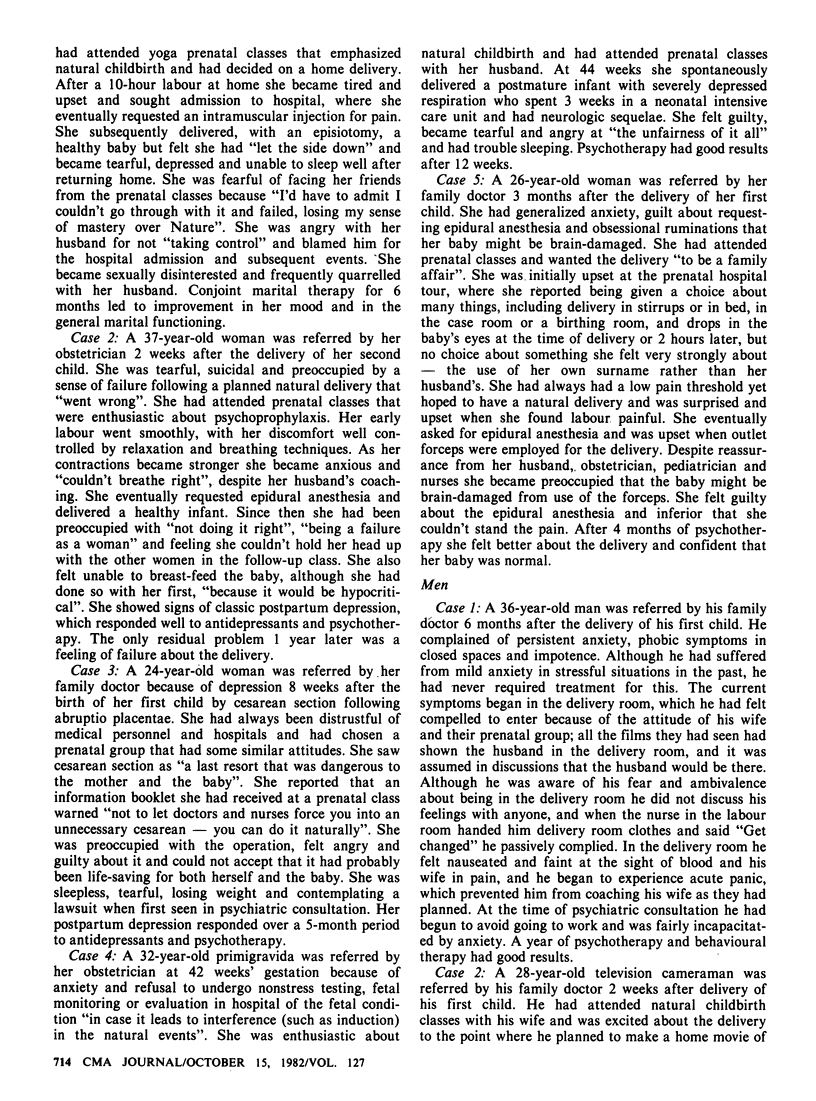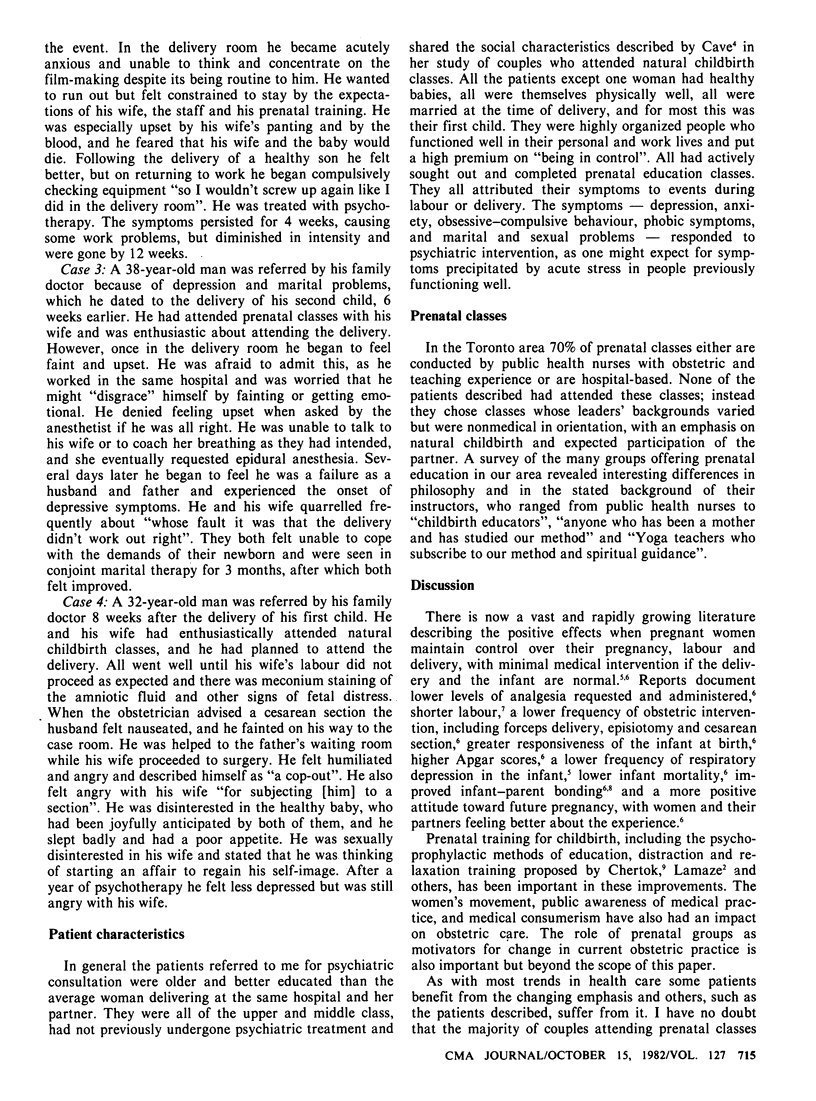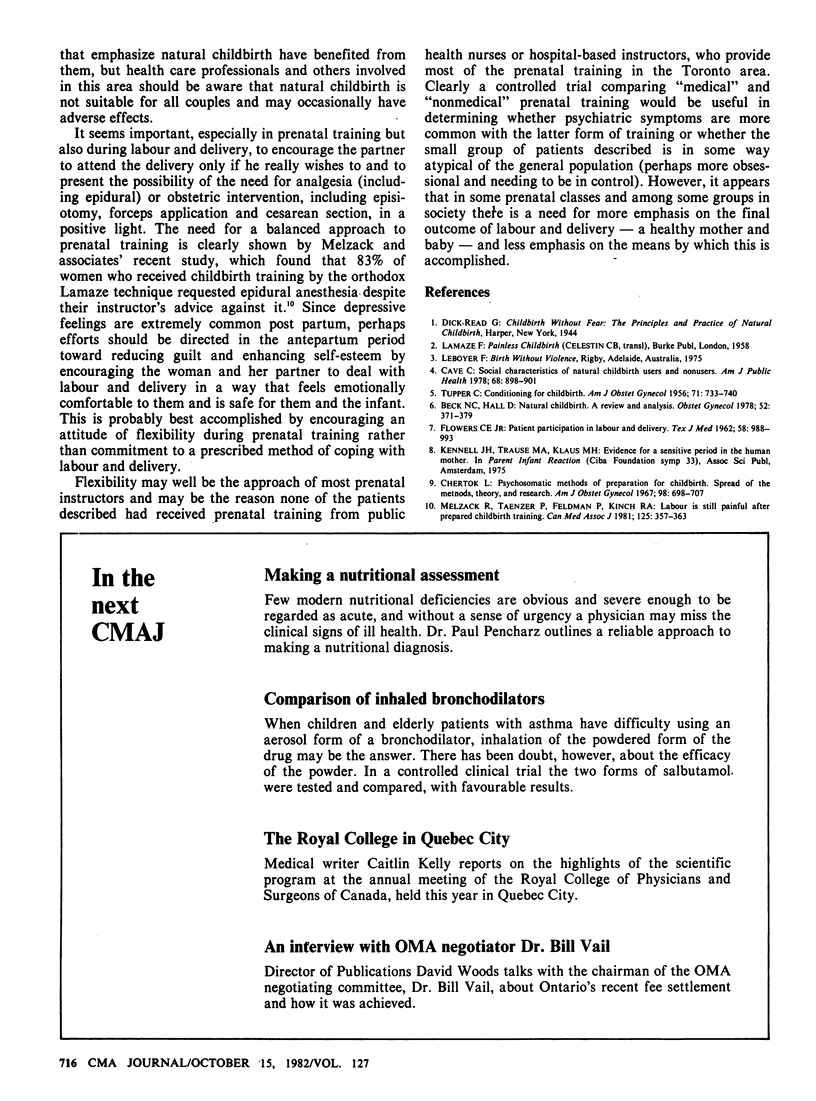Abstract
As natural childbirth has become more popular, new prenatal training groups have developed, some of which are committed to only one method of dealing with labour and delivery. This paper describes five women and four men who sought psychiatric treatment within 6 months of attempted natural childbirth that did not proceed as planned. Their symptoms included depression, anxiety, obsessive-compulsive behaviour, phobic symptoms, and marital and sexual problems. Thus, natural childbirth, although undoubtedly beneficial in most instances, is not suitable for all deliveries and may occasionally have adverse effects. Prenatal programs should emphasize an individual, flexible approach to labour and delivery and should present the possibility of the need for analgesia, anesthesia or obstetric intervention in a positive light.
Full text
PDF



Selected References
These references are in PubMed. This may not be the complete list of references from this article.
- Beck N. C., Hall D. Natural childbirth. A review and analysis. Obstet Gynecol. 1978 Sep;52(3):371–379. [PubMed] [Google Scholar]
- Cave C. Social characteristics of natural childbirth users and nonusers. Am J Public Health. 1978 Sep;68(9):898–901. doi: 10.2105/ajph.68.9.898. [DOI] [PMC free article] [PubMed] [Google Scholar]
- Chertok L. Psychosomatic methods of preparation for childbirth. Spread of the methods, theory, and research. Am J Obstet Gynecol. 1967 Jul 1;98(5):698–707. doi: 10.1016/0002-9378(67)90184-6. [DOI] [PubMed] [Google Scholar]
- FLOWERS C. E., Jr Patient participation in labor and delivery. Tex State J Med. 1962 Dec;58:988–993. [PubMed] [Google Scholar]
- Melzack R., Taenzer P., Feldman P., Kinch R. A. Labour is still painful after prepared childbirth training. Can Med Assoc J. 1981 Aug 15;125(4):357–363. [PMC free article] [PubMed] [Google Scholar]
- TUPPER C. Conditioning for childbirth. Am J Obstet Gynecol. 1956 Apr;71(4):733–740. doi: 10.1016/0002-9378(56)90566-x. [DOI] [PubMed] [Google Scholar]


